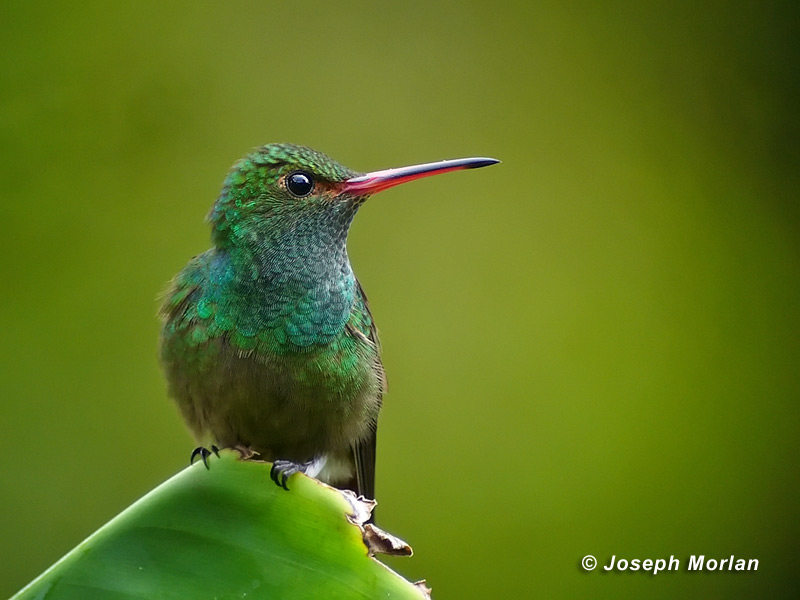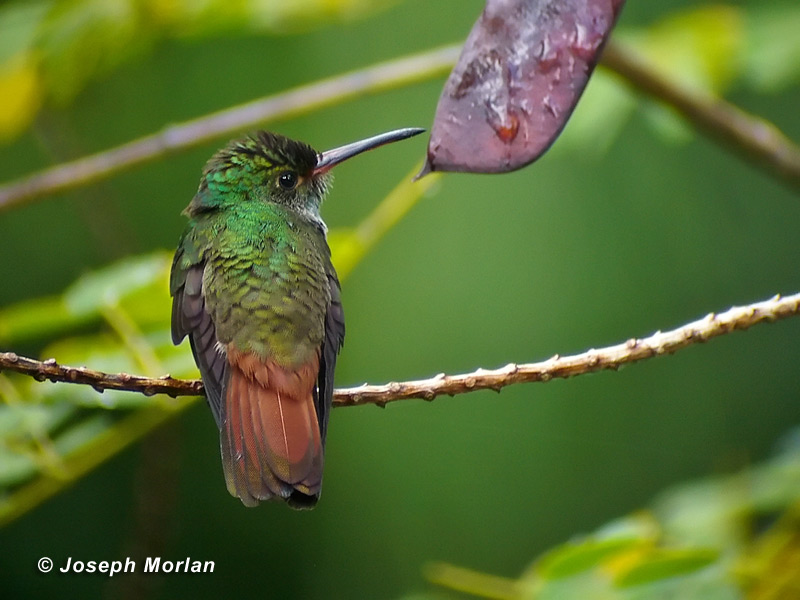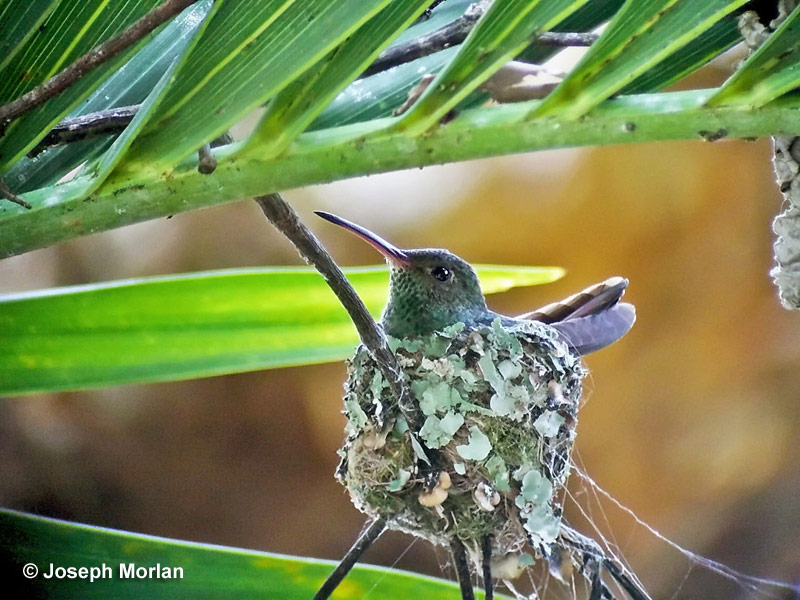
After a brief rain shower, I was finally able to digiscope this common hummingbird which perched cooperatively on a large leaf by our cabin. The throat and chest are usually depicted as green, but there is also a light dependent turquoise tinge. Here it appears powdery slate-blue in the natural cloud filtered light. This is a male. Females are similar but paler on the belly.

Glittering turquoise color to the throat and breast is more evident at this angle.

This is a different individual from the previous images. I believe it is a female showing an all dark upper mandible and less color on the throat. This image shows the rufous tail and uppertail coverts which give this species its name. The darker bronze tail tips are also visible here.

This active nest was right over a walkway between our cabin and the next. The bird seemed oblivious to people. Females are similar to males in this species, but the colors are more muted. In hummingbirds, there is no pair bond. Females build the nest, incubate the eggs, and care for the babies without help from a mate.
Four or five subspecies are recognized usually divided into two groups. This is the northernmost nominate race ranging from SE Mexico to Panama. Other races of this Rufous-tailed group are found in adjacent South America and differ slightly in size and bill length. A population (A. t. handleyi) confined to Isla Escudo de Veraguas off Caribbean coast of NW Panama comprises another group, larger and darker green above.
Digiscoped with Panasonic DMC-LZ5 | Nikon FieldScope III | 30XWA | hand-held (no adapter)